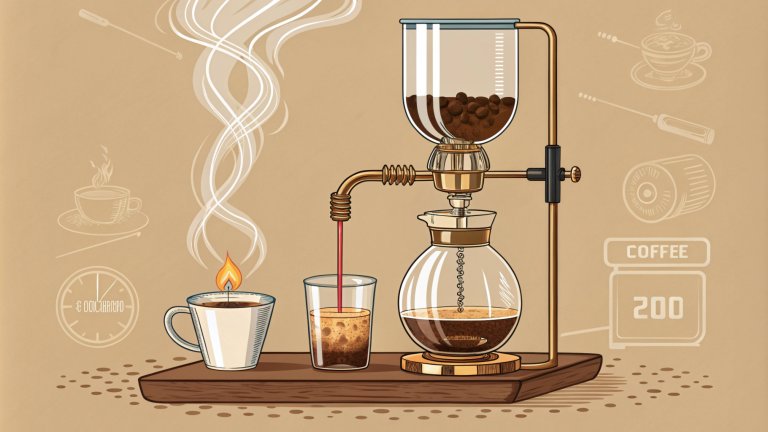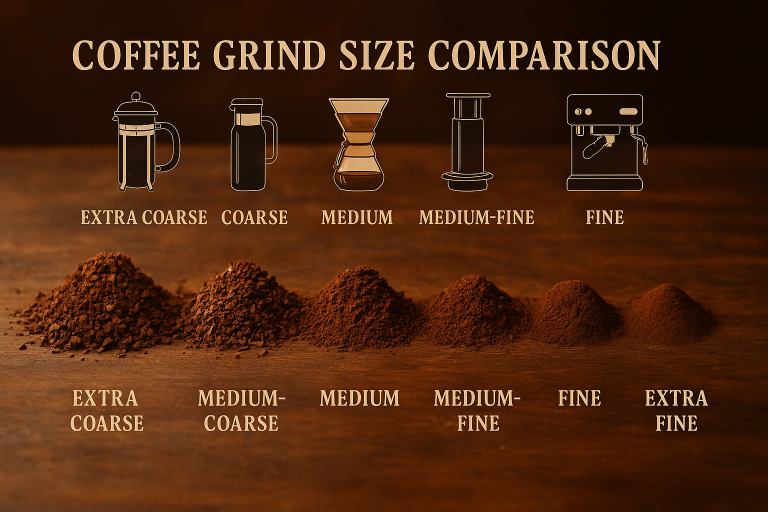
Standing at your local coffee shop, staring at the menu, you might wonder about the difference between espresso and ristretto. These two Italian coffee shots look similar but offer different experiences in your cup. The espresso vs ristretto debate isn’t just about coffee snobbery – it’s about understanding how small brewing changes create other flavors. Whether you’re a home brewing enthusiast or simply want to order with confidence, understanding these concentrated coffee shots will transform your daily coffee ritual. Both drinks use identical equipment and coffee beans, yet their distinct brewing methods produce unique taste profiles that appeal to different preferences. Let’s explore what makes these Italian classics special and help you discover which suits your taste buds best.
What is Espresso
Espresso forms the foundation of modern coffee culture, representing the perfect balance of Italian tradition and brewing science. This concentrated shot uses finely ground coffee beans and forces hot water through them under nine bars of pressure. The result is a 30ml serving of liquid gold that delivers complex flavors in every sip.
The Italian word “espresso” means “pressed out,” which perfectly describes the brewing method. Your espresso machine pushes water heated to 90-94°C through 18-20 grams of finely ground coffee in 25-30 seconds. This precise timing allows for optimal extraction of oils, acids, and caffeine compounds that create espresso’s signature taste.
Espresso’s balanced flavor profile makes it special, combining sweetness, bitterness, and acidity. The brewing process extracts the desirable flavor compounds from the first part of the extraction and the full spectrum of coffee elements throughout the full pull. This creates a medium-bodied shot with rich golden crema on top—that foamy layer that indicates proper extraction.
Modern espresso machines maintain consistent pressure and temperature, making pulling perfect shots at home easier. The key lies in using fresh coffee beans, typically 7-14 days after roasting, and achieving the proper grind size that feels like fine sand between your fingers. When done correctly, espresso is an excellent standalone drink or the base for popular beverages like lattes and cappuccinos.
What is Ristretto
Ristretto intensifies the espresso concept through restriction—hence the Italian name meaning “restricted” or “shortened”. This concentrated coffee shot uses the same equipment and coffee dose as espresso, but pulls only half the water volume. You’ll get approximately 15ml of intensely flavored coffee that packs more punch per drop than its traditional counterpart.
The magic of ristretto happens in the crucial first 15-20 seconds of extraction. During this shortened brewing time, your coffee releases its sweetest, most concentrated compounds while avoiding the bitter elements that emerge later in the extraction process. Think of it as capturing only the best part of the coffee extraction—the sweet spot where flavors are most concentrated.
Historically, ristretto gained popularity during World War II when coffee shortages forced Italian baristas to maximize flavor from limited bean supplies. This necessity-driven innovation created a brewing style that many coffee enthusiasts now prefer for its intense, syrupy consistency and enhanced sweetness. The technique proved that sometimes less truly is more when it comes to coffee extraction.
Creating ristretto requires the same fine grind and nine-bar pressure as espresso, but demands more precision in timing. You’ll stop the extraction when the coffee flow lightens in color, typically around the 15-second mark. This shorter pull results in a thicker, more viscous shot with darker, more pronounced crema that coats your palate with concentrated coffee flavors.
Espresso vs Ristretto Key Differences
Understanding the espresso vs ristretto comparison requires examining specific brewing parameters that create distinct characteristics. While both drinks use identical coffee doses and equipment, their different extraction methods produce remarkably different results in your cup.
The most obvious difference lies in water volume and extraction time. Espresso uses 30- 40ml of water extracted over 25-30 seconds, while ristretto restricts this to just 15- 20ml in 15-20 seconds. This timing difference fundamentally changes the compounds that dissolve into your final drink.
Your brewing ratio changes significantly between these two methods. Espresso typically follows a 1:2 ratio, meaning 18 grams of coffee produces 36 grams of liquid espresso. Ristretto operates on a 1:1 to 1:1.5 ratio, where the same 18 grams of coffee yields only 18-27 grams of concentrated liquid.
When you compare both shots, the physical appearance differs noticeably. Ristretto appears darker and more concentrated, with a thicker crema layer and a deeper, almost chocolate-like color. Espresso shows the classic golden-brown crema with a lighter appearance due to the increased water content.
Both drinks require the same fine grind size and nine-bar pressure, making them accessible to anyone with a standard espresso machine. The temperature requirements remain identical at 90-94°C, ensuring proper extraction without burning the coffee. Your success with either drink depends more on timing and technique than special equipment, empowering you to create these delicious coffee shots at home.
Flavor Profile Comparison
The difference between espresso and ristretto becomes immediately apparent when you taste them. The unique brewing variations create different sensory experiences that are sure to intrigue and excite different coffee preferences and occasions.
Ristretto delivers an intensely sweet and concentrated flavor experience. The shortened extraction time primarily captures the coffee’s natural sugars and fruity compounds while leaving behind many bitter elements that emerge during longer pulls. You’ll taste pronounced sweetness with minimal bitterness, creating a syrupy, almost liqueur-like consistency. The concentrated nature amplifies the coffee’s inherent characteristics, making origin flavors more pronounced.
Espresso offers a more complex and balanced flavor profile. The full 25-30 second extraction allows for complete development of the coffee’s flavor spectrum, including sweet, acidic, and bitter compounds. This creates a well-rounded shot with chocolate and nutty undertones that many coffee drinkers find familiar and comforting. The longer extraction provides depth and complexity that work excellently as a standalone drink and in milk-based beverages.
The mouthfeel differs significantly between these preparations. Ristretto’s reduced water content creates a thicker, mucous texture that coats your palate and delivers intense flavor bursts. Espresso maintains a medium body with a smooth texture that feels balanced and approachable. Your preference between these textures often determines which style you’ll enjoy more in your daily coffee routine.
Caffeine Content Analysis
Many people assume that ristretto contains more caffeine due to its concentrated nature, but comparing espresso and ristretto caffeine reveals surprising facts. Despite ristretto’s intense flavor and thick consistency, it contains slightly less total caffeine than a full espresso shot.
Ristretto typically contains 50-65mg of caffeine per shot compared to espresso’s 60-80mg. This difference occurs because caffeine extraction requires time, and the shortened brewing process limits the amount of caffeine that dissolves into your drink. While ristretto tastes more concentrated, the reduced volume and extraction time result in lower overall caffeine content.
The caffeine concentration per milliliter is higher in ristretto, making it more potent by volume. However, your total caffeine intake remains lower since you’re drinking a smaller serving size. This makes ristretto an excellent choice if you’re sensitive to caffeine but still want an intense coffee experience.
These caffeine differences matter more than you might think for practical daily consumption. If you typically drink multiple coffee servings throughout the day, choosing ristretto over espresso can help you enjoy more coffee moments without exceeding your caffeine tolerance. Understanding these differences helps you make informed decisions about your daily coffee intake.
When to Choose Espresso vs Ristretto
Deciding between espresso vs ristretto depends on your taste preferences, caffeine sensitivity, and intended use. Each brewing style excels in different situations and appeals to distinct coffee drinking preferences.
Choose ristretto when you prefer sweeter, more concentrated coffee experiences . If bitterness bothers you or you enjoy intense, syrupy textures, ristretto delivers satisfaction in a small package . He reduced caffeine content, making it perfect for afternoon coffee breaks when you want flavor without excessive stimulation. Ristretto also works beautifully in milk-based drinks like flat whites, where its concentrated flavor cuts through the milk effectively.
Choose espresso when you appreciate balanced complexity and traditional coffee flavor. The full extraction provides familiar chocolate and nutty notes that many coffee drinkers recognize and enjoy. Espresso’s higher caffeine content makes it ideal for morning routines when you need that extra energy boost. Its balanced profile also works excellently as a base for various coffee drinks, from lattes to Americanos.
Your equipment and skill level also influence your choice. Ristretto requires more precise timing and can be trickier for beginners to master consistently. Espresso offers more forgiveness in timing while still delivering excellent results with proper technique. Consider starting with espresso to build your skills before moving to the more demanding ristretto preparation.
Brewing Tips for Both Drinks
Mastering the espresso vs ristretto brewing techniques requires understanding specific parameters for each style. Both drinks share fundamental requirements but demand different approaches to achieve optimal results.
For ristretto, focus on precise timing and grind adjustments. Use the same fine grind as espresso, but oversee your extraction, stopping at 15-20 seconds when the flow lightens. You aim to capture that sweet, concentrated first portion while avoiding the bitter compounds that emerge later. Practice stopping your extraction by watching the color change from dark brown to lighter tan.
Espresso brewing requires consistency in your parameters. Maintain the 1:2 ratio using 18 grams of coffee to produce 36 grams of liquid in 25-30 seconds. Pay attention to your grind size – it should feel like fine sand and create enough resistance to slow water flow appropriately. The crema should be golden-brown and last several minutes after brewing.
Both preparations benefit from fresh, properly stored beans. For optimal flavor development, use coffee roasted within 7-14 days. Store your beans in an airtight container away from light and heat to preserve their quality. Grind immediately before brewing to maintain freshness and prevent flavor loss.
Temperature control matters significantly for both styles. Maintain water temperature between 90-94°C for proper extraction without burning. Let your espresso machine warm up 15-30 minutes before brewing to ensure temperature stability. Consider the ambient temperature and adjust slightly if needed for consistent results.
Frequently Asked Questions
Is ristretto stronger than espresso? Ristretto tastes stronger due to its concentrated nature, but espresso contains more total caffeine. The espresso vs ristretto strength comparison depends on whether you measure flavor intensity or caffeine content.
Which has more caffeine? Espresso contains 60-80mg of caffeine per shot, compared to ristretto’s 50-65mg. The shorter extraction time in ristretto limits caffeine dissolution despite the concentrated flavor.
Do I need different equipment? No, both drinks use identical espresso machines, grinders, and accessories. The difference lies in timing and technique rather than specialized equipment.t
Which costs more? Both use the same amount of coffee beans, so the cost remains identical . Some specialty cafes might charge differently, but the ingredient costs are the same .
Can I make these at home? Absolutely! Home espresso machines can produce excellent results for both styles . Use espresso to build your skills before attempting the more precise ristretto timing.
Which works better in milk drinks? Many baristas prefer ristretto for flat whites and cortados because its concentrated flavor effectively cuts through milk. Espresso works well in larger milk drinks like lattes and cappuccinos.
Making Your Coffee Choice
Your espresso vs ristretto decision ultimately comes down to personal taste and coffee goals. Both represent authentic Italian coffee traditions that offer distinct experiences for different moments and moods.
Experiment with both styles to discover your preferences . Try ristretto when you want intense, sweet flavors with lower caffeine, and choose espresso for balanced complexity with traditional coffee characteristics. Many coffee enthusiasts enjoy both depending on their mood, time of day, or intended pairing.
Remember that great coffee starts with quality beans and proper technique, regardless of your chosen style. To improve your skills, focus on consistent brewing parameters, fresh ingredients, and regular practice. Whether you prefer the concentrated intensity of ristretto or the balanced complexity of espresso, both drinks offer rewarding experiences for dedicated coffee lovers.

